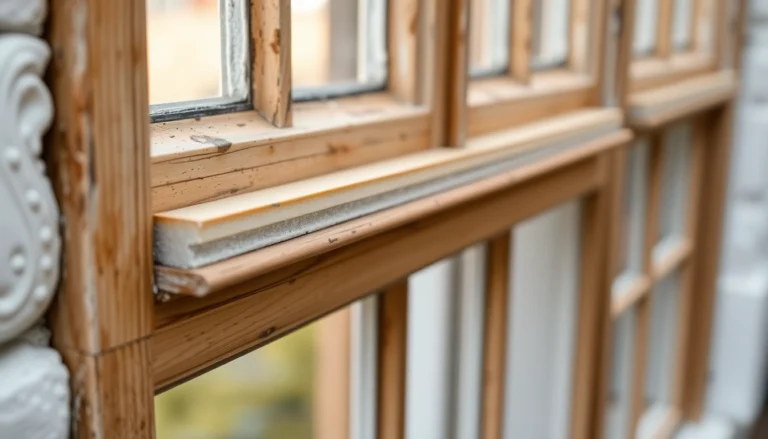In the realm of construction, renovation, and custom woodworking, the role of a Carpenter stands as a cornerstone of craftsmanship and precision. Carpenters are skilled tradespeople responsible for constructing, repairing, and installing building frameworks, structures, and intricate woodwork that define our living and working spaces. From framing new buildings to intricate cabinetry, their expertise ensures durability, safety, and aesthetic appeal. As the demands of the construction industry evolve, understanding the multifaceted nature of carpentry, how to select the right professional, and the best practices to ensure quality results becomes increasingly essential for homeowners, contractors, and industry professionals alike.
Understanding the Role of a Carpenter
What Does a Carpenter Do?
Carpenters perform a wide array of tasks that are vital for both new construction projects and renovation efforts. According to the Occupational Outlook Handbook, they skillfully construct, repair, and install building frameworks and structures made from wood and other materials. Their work includes framing walls, floors, and roofs; installing doors, windows, and cabinetry; finishing interior surfaces with trim, molding, and paint; and executing specialized work such as staircases or custom furniture. The precision and craftsmanship of a carpenter determine not only the structural integrity of a building but also its visual appeal and functionality. Skilled carpenters interpret blueprints, measure accurately, and execute cuts and assemblies with meticulous detail, ensuring each project meets safety standards and client expectations.
Different Types of Carpenters and Specializations
Carpentry is a diverse trade, encompassing several specialized roles tailored to distinct phases of construction and finishing work. Some of the primary categories include:
- Rough Carpenters: Focused on framing and structural components, they work on the skeleton of buildings, erecting walls, floors, and roofs that serve as the foundational framework.
- Finish Carpenters: These artisans concentrate on detailed finishes, including installing trim, molding, cabinets, staircases, and other decorative or aesthetic elements.
- Residential Carpenters: Specialize in home-building projects, such as constructing frameworks, installing cabinetry, and finishing interiors in residential settings.
- Commercial Carpenters: Work on larger scale projects like office buildings, malls, and industrial facilities, often involving complex structural and architectural features.
- Industrial Carpenters: Typically involved in more specialized tasks related to factory settings, such as installing formwork for concrete or working with industrial-grade materials.
- Cabinetmakers and Woodworkers: Focused on crafting custom furniture, cabinetry, and decorative woodwork, often requiring artistic skill and fine attention to detail.
Understanding these distinctions helps clients and contractors identify the right expertise for their specific project needs, ensuring quality outcomes tailored to each phase of construction or restoration.
Skills and Qualifications Needed
The trade of carpentry demands a blend of technical skills, physical dexterity, and practical knowledge. Key skills include:
- Proficiency in reading blueprints and technical drawings
- Mastery of measuring and marking tools
- Expertise in cutting, shaping, and assembling various materials
- Knowledge of safety standards and building codes
- Problem-solving and adaptability to unforeseen challenges
- Attention to detail and aesthetic sensibility
Qualifications typically include a high school diploma or equivalent, supplemented by apprenticeship programs, vocational training, and on-the-job experience. Many advanced carpenters pursue certifications such as OSHA safety standards or specialized trade licenses to enhance credibility and career prospects.
Choosing the Right Carpenter for Your Project
Factors to Consider When Hiring
Selecting a qualified carpenter is crucial to the success of any project. Consider the following factors:
- Experience and Specialization: Ensure the candidate has relevant experience in the specific type of work you require, whether it’s framing, finishing, or custom woodwork.
- Reputation and References: Seek reviews, testimonials, and references from previous clients to gauge their quality and reliability.
- Licensing and Insurance: Verify that the carpenter holds proper licenses and insurance to protect against liabilities and ensure adherence to safety standards.
- Cost and Payment Terms: Obtain detailed quotes and understand payment structures to avoid surprises and ensure value for your investment.
- Availability and Timelines: Confirm their availability and whether they can meet your project deadlines without compromising quality.
Questions to Ask Potential Carpenters
When interviewing prospective professionals, consider posing questions such as:
- Can you provide references from past clients?
- Do you have experience with projects similar to mine?
- Are you licensed and insured?
- What is your estimated timeline for completion?
- How do you handle unexpected issues or delays?
Clear communication during this phase helps establish expectations and fosters a collaborative working relationship, reducing risks of misunderstandings.
How to Verify Credentials and Experience
Beyond asking questions, verify credentials by:
checking licenses with local licensing authorities, requesting proof of insurance, reviewing portfolios or samples of previous work, and consulting online reviews or professional associations. Attending a pre-project walk-through or requesting an in-person assessment can also help evaluate the job site and craftsmanship before making a final selection.
Carpentry Techniques and Best Practices
Traditional vs Modern Methods
While traditional carpentry techniques emphasize hand tools, craftsmanship, and time-tested methods, modern practices incorporate advanced tools, CAD design, and sustainable materials. Each approach has its merits:
– Traditional methods foster a deep understanding of materials and durability, suitable for restoration projects.
– Modern methods offer efficiency, precision, and customization, ideal for large-scale or complex designs.
Incorporating both approaches can optimize project quality, reduce waste, and improve construction timelines.
Planning and Designing Carpentry Projects
Effective planning starts with detailed blueprints, material selection, and an accurate timeline. Utilizing CAD software or 3D modeling can visualize the final outcome and identify potential conflicts early. Collaboration with architects and clients ensures alignment with aesthetic and functional goals. Proper planning minimizes errors, controls costs, and streamlines procurement and scheduling.
Quality Assurance and Troubleshooting
Continuous quality checks during each phase prevent rework and ensure durability. Techniques include verifying measurements, inspecting joints, and testing structural integrity. Troubleshooting common issues such as warping, misalignments, or material defects requires experience and patience. Proactively addressing problems helps maintain project standards and reduces delays.
Cost and Budgeting for Carpentry Work
Average Prices and Hourly Rates
Understanding typical costs for carpentry helps clients plan budgets effectively. According to recent data, the average hourly rate ranges from $75 to $125, with total project costs varying widely based on complexity. For example, basic framing may cost less than intricate custom cabinetry or detailed finish carpentry. Nationally, most carpenters charge between $40 to $200 per hour depending on experience, specialization, and regional factors.
How to Get Accurate Quotes
To ensure accurate estimates, provide detailed plans, material specifications, and project timelines to multiple contractors. Request written proposals that itemize labor, materials, permits, and contingency costs. Site visits and preliminary assessments by the carpenter can identify potential challenges and refine estimates, preventing budget overruns.
Saving Money Without Compromising Quality
Cost-effective strategies include sourcing quality materials proactively, opting for modular or prefabricated components, and scheduling work during off-peak seasons. Maintaining open communication with your contractor ensures alignment on priorities and reduces unnecessary additions or changes. Investing in skilled labor upfront can prevent costly mistakes and enhance the longevity of the finished project.
Maintaining and Extending the Life of Carpentry Work
Routine Inspection and Maintenance Tips
Regular inspections can identify early signs of wear or damage—such as cracks, warping, or loose joints—allowing timely repairs. Cleaning surfaces, checking for signs of moisture or pests, and tightening loose hardware help preserve woodwork. Scheduling professional assessments periodically ensures structural integrity and aesthetic appeal.
Protective Treatments and Finishes
Applying protective finishes like sealants, stains, or paints guards wood against moisture, UV rays, and pests. For high-traffic areas, durable finishes such as polyurethane provide added resilience. Proper finishing techniques not only improve appearance but also significantly extend the lifespan of wood structures and furnishings.
When to Call a Professional for Repairs
Minor issues such as loose handrails or surface scratches can often be handled by general maintenance. However, structural problems, extensive rot, or pest infestations require professional intervention. Timely repairs by skilled carpenters prevent escalation into costly or hazardous situations, ensuring long-term safety and durability.











